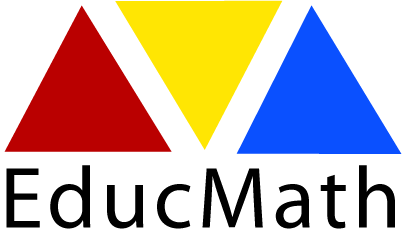The sounds of a secondary school
Overview of the experiment
This is to propose a discovery of an everyday space (often decried by students), the space of a school under the prism of sounds and sounds that it evokes. Besides the noise associated with the activities of students (who are the subject of a measure which we will see the limits), students can discover sounds and spaces unknown outside of time determined by the school timetables in a learning process of listening and its representation mapped. Through this process of centering and listening, students are made ​​aware that they are generators of noise in the classroom and in different areas of the facility The method is to conduct surveys of noise levels using a sound level meter, record sounds and geolocation applications through smartphones and tablets. Furthermore, this method includes a work sheet indicating the type of sound heard, the direction and intensity. This information is subsequently reworked in class with online mapping tools to compile in map form, all data collected.
Objectives:
Several objectives are at work:
- Propose a first approach to education and to listen to the mapping of sounds and transcribe a sound atmosphere of some places of this secondary school.
- Apprehend a domestic space in terms of "field trip", considering its establishment as a place of exit. This distancing is aimed a rediscovery and reclaiming the school by students through the sounds that unknown vehicle.
- Propose a second approach framed by the use of mobile tools (smart phones, tablets) in a school environment.
- By distancing implementation, make students think on their own sound productions within an institution.
- Highlight a first awareness of the importance of preventing hearing.
Setting up:
Several studies and tracks were explored with a sixth class and all classes of the fifth on a limited time (6-8 weeks).
General instructions:
After a presentation of tools and applications used (tablets, smartphones and sound level meters), the students listened for a minute all the noise they could collect. They should note the type of sound heard, the direction and intensity of sounds on a sheet of paper. This involves drawing the place where one is, in other words make a plan (which some have previously viewed in Google Earth), then to represent and to indicate its orientation. This applies even to those who had started the meter. This work schedules for questions generally took place in the morning or 8:00 to 8:40 or 10:30 to 11:00.
1. Initial work on a space adjacent to the college for the first eccentricity: the park of Mas
Présentation
This first work is to teach students about sound environments around them, near the college. This choice was made based on a space familiar but certainly not the college. The general instructions (see previous paragraph) are implemented according to two processes: the first involves a gathering of students and a first listen. Then they fall into different groups that travel through space defined to have multiple points of readings and listenings.
Sound mapping (includes only a few recordings together on the playlist audioboo)
View Larger Map
Conclusions
This first approach of sound space allows students to decenter from the school site itself and the train listening to their surrounding environment. It also aims to show that the soundscapes of the adjacent park are very close to that of being outside during the morning recess time. In fact, the image of the playground put in relation with the image of the park (associated with calm, at rest) questions the students ...
2. A second on practices of the playground..
Présentation
The above process is repeated in an identical manner but applied to courses at the college and high school and before the administration building. As in observations, variations were introduced: first, statements have been made during recess 10h, college side (see conclusions) and a more systemic approach of listening has been implemented for the rest of the time (see student work)
Student work
Work on paper: the pre-college and college courses have been "cut" as visible markers by students once there (after the style of the first bench to the left ...) then for each space defined, they have the name types of noise which they consider most important and noted on a scale of 1 to 10, the noise intensity felt.

Sound mapping performed with Noisetube (click on image to access the download KMZ). Noisetube is a smartphone application that allows Android tablet and raise noise levels, while LBS. In this exercise, students had to travel back and forth during the high school and college along the lines of "grid" defined in the paper work to get an overview of the noise level of the playground.
Work of cartographic representations (click images to access map)
Sound mapping (includes only a few recordings together on the playlist audioboo)
View Larger Map
Conclusions
This work on the playground helped to highlight a number of elements:
- On the types of noises heard outside interludes between courses, there are mainly: natural sounds leaves of trees, sound of birds and mechanical sounds of transport: trucks, cars, planes
- On the noise intensity, there is a big difference between hourly from 8:30 9:30 ET 10:10 to 11:00. The levels found early in the morning do not exceed 60 decibels. By cons, as shown in the map produced with NoiseTube, the intensity is stronger towards the end of the morning, especially near areas of restorations and the CDI. In fact, this intensity varies according to student attendance.
- Attempts to sound readings were made during recess but without results (as can attest to some voice recordings taken during recess). From the standpoint of listening, it was impossible to distinguish the directions of peculiar sounds, the noise prevails; records sound the same could not be presented, the importance of movement of students have distorted results.
- Level mapping, this exercise has shown the different ways to represent the types of sounds, their directions, their intensities but also the iconographic representation of students: as a stand? as the person I am (a college student) or the person I want to be (military, airline pilots ...).
3. Work around the school canteen and the CDI.
Présentation
These two very different places inaugurate a work in confined spaces. The first, CDI, is both a space of courses, promotion of students in short, a place open to everyone. The canteen is a place generally used at specific times, morning, noon and night. Yet between these periods of high inflows, the life of the canteen imperceptible sounds of different moods at different times.
Student work

Sound mapping (includes only a few recordings together on the playlist audioboo)
View Larger Map
Conclusions
This third work has several meanings: in the case of CDI is a reinstatement of a space that is both free movement but also of course, in order to return students to a broad framework of a classroom and show soundscapes that canoccur in them.
Moreover, the canteen has emerged as a workspace where students have discovered other sounds that the usual noises conversations, clinking glass, forks ... Moreover, they found constant and intense sounds like the presentation refrigerated truck, which has a large volume but you hardly notice it at mealtimes.









